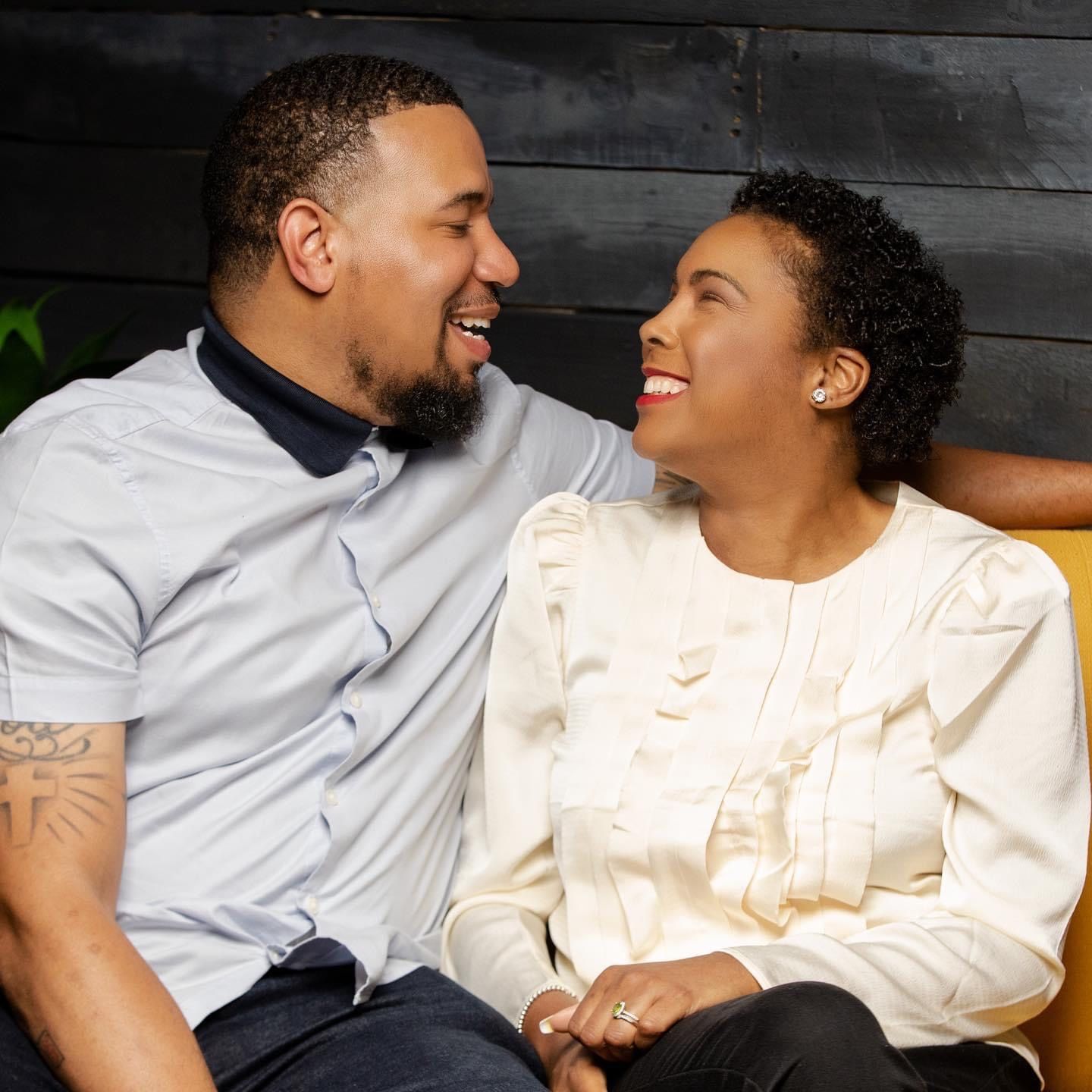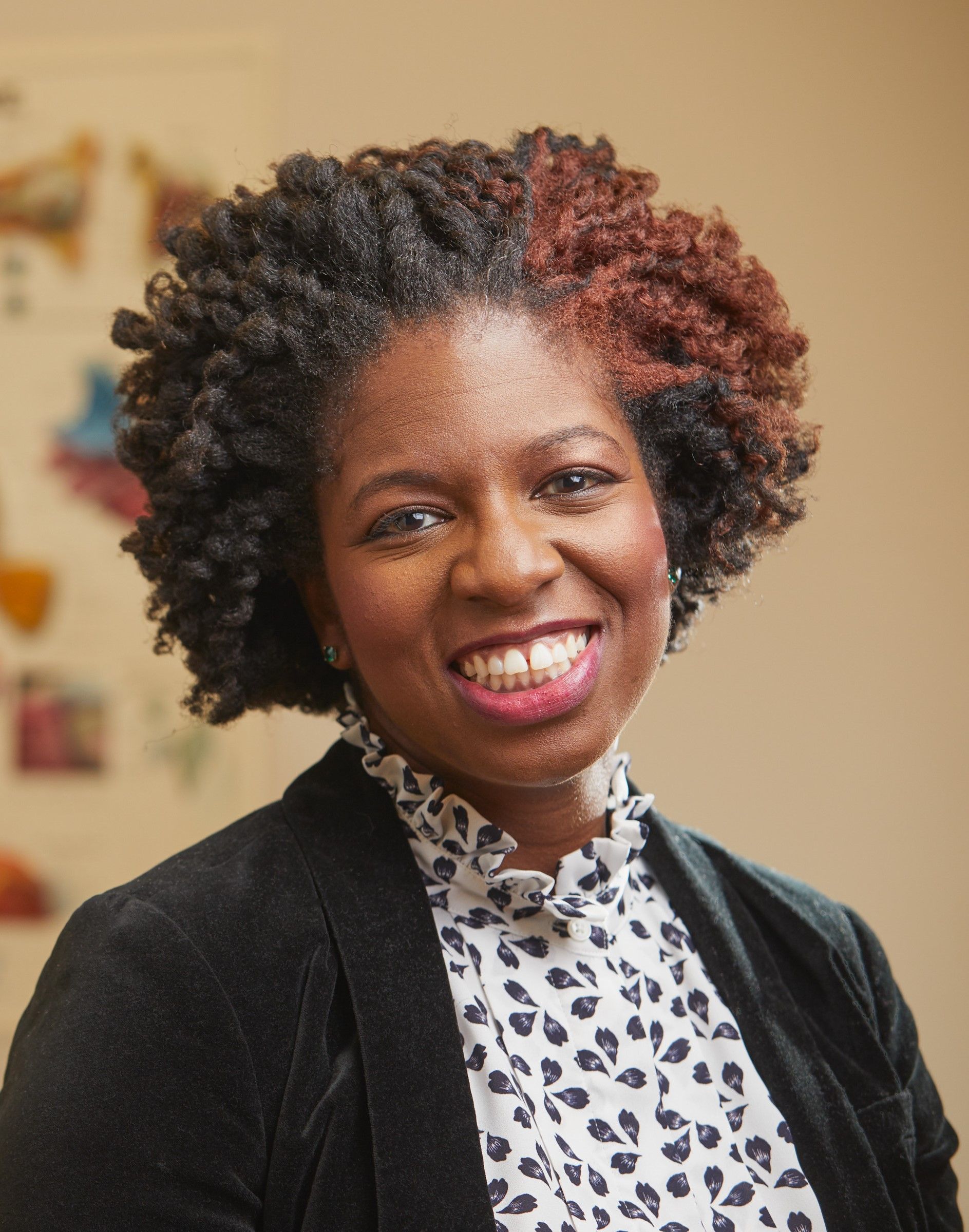Article
The crisis of diabetes among Black Americans: This does not have to happen
Author(s):
Tiffani Martin was diagnosed with type 1 juvenile diabetes when she was just 5 years old, and has battled myriad health issues as a result, including vision loss. Leading the charge for a multifactorial approach to combat diabetes, Kristen Nwanyanwu, MD, MBA, MHS, and her team have embraced the need for a multi-pronged program to address health disparities in diabetic retinopathy.
Richard and Tiffani Martin (Image courtesy of Latruius Whitfield)

Tiffani Martin is an African-American woman who was diagnosed with type 1 juvenile diabetes when she was just 5 years old, and her story shines light on a very common scenario among ethnic minorities in this country, who receive less than proper management of the disease that may be rooted in fear of the medical profession, inadequate screening opportunities, and lack of proper emphasis on patient education about the consequences of uncontrolled diabetes.
During early childhood, in contrast to many African-Americans, Martin was able to benefit from both medical and psychiatric therapy and other available resources and had a strong familial support system. However, during adolescence the disease management slipped due to challenges associated with that age group: proper eating, taking insulin, and working out were no longer priorities. This situation was exacerbated during the college years and in early adulthood during employment, with little to no attention to disease management.
Martin sends a strong message to young adults: both have your independence but do not allow it to take control of your health and avail yourself of the available resources. She also advises a change in messaging by the medical community.
By age 26, she was diagnosed with diabetic retinopathy.
“This is when the disease caught up with me,” she explained. “After returning from traveling, I started to notice floaters in my left peripheral vision that I chalked up to fatigue and stress. I continued with my usual schedule and 1 day awoke with what looked like a red filter in my left eye that I could not see through.”
Ultimately, the right eye also was involved. Injections, multiple laser applications and surgeries were undertaken to salvage the remaining vision. By the following year, Martin recalled that she lost a substantial amount of weight, developed medication-associated muscle atrophy, started dialysis, and shortly thereafter, her vision had reduced to no light perception.
“I had lived a very active, independent life previously, and this demanded a major psychological adjustment,” she said.
During this time, with the support of her family, she was forced to learn new necessities. Martin had to learn to navigate her way around her home and workplace, which involved learning the numbers of steps to reach an emergency exit, the bathroom, and office.
In addition, the detachment of the nerves as a result of the retinopathy was intensely painful, despite the medications and painkillers.
The following year, Martin underwent a dual kidney and pancreas transplant, but later developed pneumonia, which affected the health of the kidneys. She required multiple hospital stays to prevent complete kidney failure that lasted for months. The COVID-19 pandemic arose at this point and she began dialysis.
Community outreach
During this time, Martin and her husband Richard began to reach out to all underserved communities to advise them of measures to prevent types 1 and 2 diabetes.
“We want to raise awareness of this disease in the community and to bring knowledge about resources to them,” she said. “There is a great deal of fear in the community, but with knowledge, this disease can be prevented. This is more than just a one-dimensional fight, it is not just environmental, it is also cultural and involves a major culture shift for the family. If I can prevent anyone from becoming blind, I will do so.”
She currently is a spokesperson for the American Diabetes Association (ADA).
Tackling diabetes head-on in a multifactorial approach
Kristen Nwanyanwu, MD, MBA, MHS

Kristen Nwanyanwu, MD, MBA, MHS, an assistant professor of Ophthalmology and Visual Science at Yale University in New Haven, CT, is not fooling around. Years ago, she identified marked health care disparities among minorities. She is also the principal investigator at the SEEN Lab (Sight-Saving Engagement and Evaluation), the goal of which is to fight preventable blindness caused by diabetic retinopathy.
Nwanyanwu and her team also have embraced the need for a multi-pronged program to address health disparities in diabetic retinopathy. This includes quantitative analyses, determining the factors associated with disparities in diabetic retinopathy, engaging community members and inquiring why individuals avoid screening, and creating interventions to advance health equity in high-risk populations, she explained. In addition, a pilot study is in the offing to leverage the patient navigators to pair high-risk individuals with someone to help them navigate the barriers to care.
Because of the diversity of New Haven, with a population that is 30% Black, 30% Latinx, and the remainder myriad other groups, Nwanyanwu and her team addressed the high-risk population in the city to determine the reality in the community regarding health care.
“However, the knowledge of the need for screening to detect diabetes was not translating to what was actually happening in the community,” she explained. “The results we found were multifactorial. When talking about racial and ethnic disparities, we really have to talk about racism and biases to start because they impact how individuals are perceived when accessing care and how the patients feel they are being perceived.”
In addition to perception, individual and community characteristics are considered. One factor that kept popping up is fear both of the disease, which on the one hand spurred screening, and fear of the identification of diabetes, which undermined screening. In addition, mistrust of the medical community rears its head based on Black history.
This challenged clinicians to design programs to target need based on community health and perspective. This is the current focus of her work.
Interestingly, the COVID-19 pandemic actually had a positive effect on targeting the community because identifying neighborhood leaders was a great aid in opening doors to get testing and vaccines into the community.
“The challenge is not only about creating optimal care delivery models but also about how a community responds to those because of the history of inequity,” Nwanyanwu commented.
This element, including, considering the community’s opinion about a health care change, has been missing. A prime example is the 1-shot Johnson & Johnson vaccine availability in New Haven that aroused suspicion about the motivation beyond its availability when other vaccines required 2 shots.
“I think we are going to get better at this and as a result our treatments will get better,” she said. This is important because diabetic screening stands at about 50% nationally and increases in older populations to about 60% to 70%, which is still too low.
Some areas to be explored, based on community preferences regarding care mode and location, are telehealth, mobile vans, and use of artificial intelligence, and importantly follow-up.
Other clear needs, to more fully reach community members, are recruitment of Black and Latinx ophthalmologists and researchers to better meet the needs of minorities.
“I know we can get better at this,” Nwanyanwu said. “With humility and community engagement, we can build systems that allow Black people to achieve their best eye health. Those same systems will benefit everyone.”
American Diabetes Association (ADA)
The ADA has developed a special Focus on Diabetes initiative that provides easy tools and resources to individuals with the goals of raising awareness about diabetes and preventing diabetic-related eye disease. One such tool is an ADA Diabetes Risk Test that takes 60 seconds to complete.
Martin is an ambassador for the ADA, and Dr. Nwanyanwu serves as a spokesperson for this initiative.
Newsletter
Don’t miss out—get Ophthalmology Times updates on the latest clinical advancements and expert interviews, straight to your inbox.





